
I was homesick for the Hiiragiya after we left.
Homesick for a hotel? Really?
Turns out that yes, it’s possible. A beautifully traditional ryokan like Hiiragiya is as luxurious and indulgent as any top hotel, but much more personal.
When we returned from sightseeing in the afternoon, our room attendant immediately brought us a pot of tea and cookies. Since it had been a rainy, cool day, we decided to indulge in a hot bath in the large tub down the hall; when we returned, our original snack had been replaced with cold tea and different cookies to suitably accompany it.
You certainly don’t go to a ryokan for anonymity!

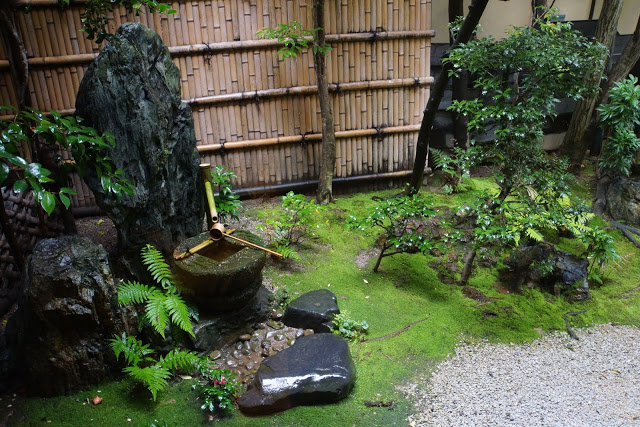
If you’re accustomed to modern hotels, Hiiragiya will be an adjustment. The inn has been in operation since 1818, with art and antiques that seem to date from that era, and a patina that can’t be reproduced. Our room came with motorized drapes that ran on what looked like old model train tracks, undoubtedly an innovation when installed. It’s also a bit creaky, with audible footsteps and voices from our upstairs neighbors.
But after baths and delicious dinners, we slept amazingly well on the thick futon beds that our kimono-clad room attendant laid out on the floor for us. (And presumably our neighbors did too, as we didn’t hear a peep from them after bedtime.)
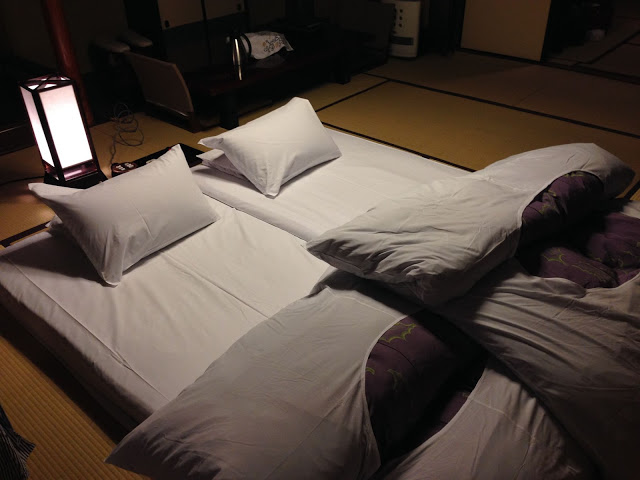

Check-in time is strict at a ryokan, so we dropped off our bags upon arriving from Tokyo and headed out to explore. When we returned, our things had been installed in the antechamber of our room, and we immediately changed into the yukata robes that were provided.
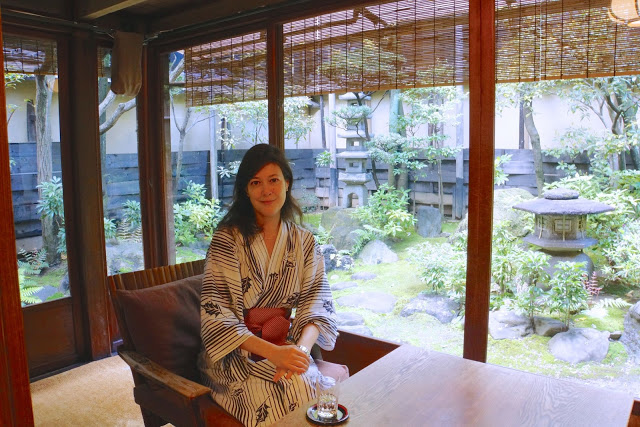
Our room had three areas beyond the antechamber – the main tatami room with a low table and two zaisu chairs (cushioned seats with a back to lean against as you sit on the floor), an enclosed porch area overlooking the garden with a table and chairs, and the bathroom area. The bathroom had both Japanese and Western toilets in separate rooms, plus a cedar-lined bath always filled with hot water beneath a wooden cover.
Part of the beauty of a ryokan is that it forces you to relax: your activity options are reading or writing at the table in the tatami room or the porch, taking a bath in either your room or in one of the larger, but still private, main bathrooms, or perhaps having a shiatsu massage in your room.
We arranged massages one afternoon, which I highly recommend. The staff had our futons laid out when we arrived back from sightseeing (shiatsu is done on the floor), and we changed into our yukata, to be worn during the massage. It was my first shiatsu massage and I liked it much better than the usual kind – lots of gentle stretching and a wonderful focus on my tired legs and feet.
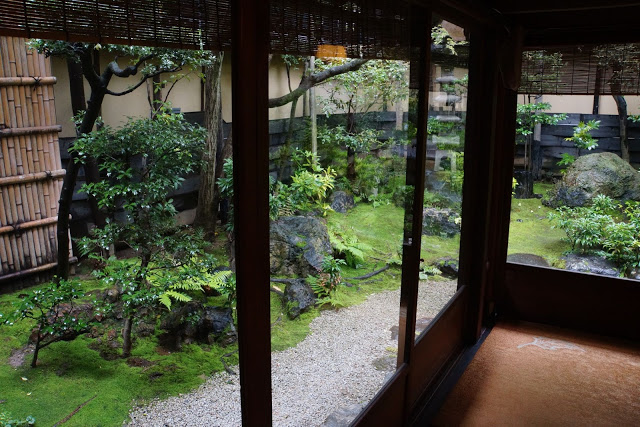

Besides relaxation, the other main focus at a ryokan is the food.
On our first night, we had a full kaiseki dinner served in our room. Now, I’m no stranger to eating dinner at home in my PJs – but never with this level of cuisine and attentive service.
Throughout the evening there were gentle knocks at our door to announce the next course (and once, the ryokan’s proprietress came in to greet us and tell us, while kneeling on the tatami in a beautiful kimono, of the inn’s history).
Everything is served on lovely dinnerware, much of it decorated with Hiiragiya’s holly leaf symbol. The menu for our kaiseki dinner fills an entire page, with 11 courses, some of which have a dozen components.
Aperitif (Shokuzen-shu) – Unfiltered dai-ginjo sake in a tiny glass
Appetizer (Saki zuke) – Simmered soft roe and sea bream milt in jelly, broiled bracken and broad bean, simmered abalone, steamed uni, simmered Japanese yam, Japanese pepper flower. All of these were composed together on a small boat-shaped dish.
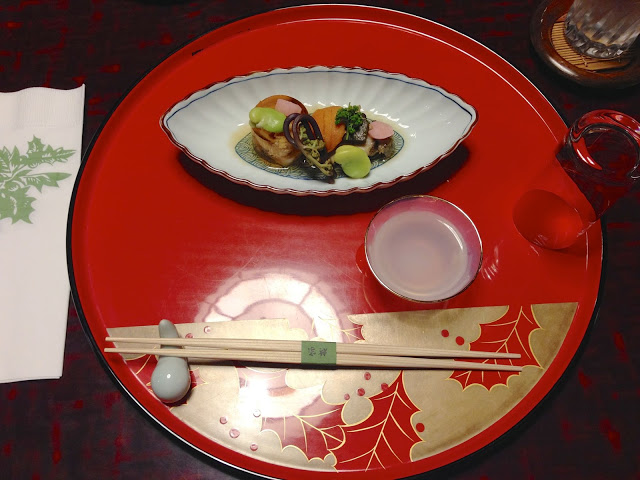
Simmered dishes (Nimono-wan) – Dashi soup with greenling, tofu mixed with yuba, rape blossoms, carrot, yuzu, and sauce of kudzu flour mixed with green pea.

Sashimi (Mukou zuke) – Sea bream, tuna, Sakhalin surf clam, halfbeak, radish, laver, shiso, wasabi.
The tuna was so marbled that it looked more like Wagyu beef, and so rich that I asked D to finish mine. (He was more than happy to do so!)

Grilled and Feature dishes (Yakimono & Hassun) – Grilled sea trout with sweet miso paste mixed with kinome leaves, broiled butterbur in soy sauce, ginger, salted cherry leaves, sushi of broiled tiger prawn and tamago, dressed firefly squid and ostrich fern with vinegared miso, skewer of boiled tiger prawn, grilled white asparagus, and fish paste mixed with mugwort.
Phew, that’s a lot to transcribe from the menu! This was a really stunning presentation with so many components. Unfortunately, I was starting to get full…

Beef dishes (Niku ryouri) – Simmered beef, grilled onion, asparagus, and shiitake mushroom, tomato, rosemary, grated daikon with red peppercorns, ponzu vinaigrette.
This was delicious, with just a small piece of tender meat and delicate accompaniments.

Simmered dishes (Takiawase) – Simmered bamboo shoot, wakame, ocellated octopus, green peas, fu, kinome.
A true springtime dish. The fu (wheat gluten, aka seitan), was shaped like a cherry blossom and delicately tinted pink, making a beautiful contrast with the peas and kinome leaves.

Soup (Tome-wan) – Aka-miso with Sakura shrimp, dried sea lettuce.
Rice (Gohan) – Seasoned with bamboo shoot and kinome.
Pickles (Kou-no-mono) – Pickled daikon with sesame, cut cucumber and hinona turnip, leaves of daikon.
Rice accompanied with miso soup and pickles is the final savory course in a kaiseki meal.

Dessert (Mizu-mono) – Jelly of strawberry, melon, and mandarin orange, salted cherry blossom ice cream.
Dinners in Japan end on a light note, usually with fruit. Here there was again a nod to the season with the cherry blossom ice cream (we had salted cherry blossoms or leaves at many of our meals).

Stay tuned for our fabulous breakfasts and another traditional dinner…

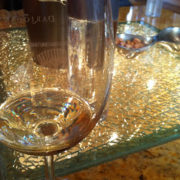 A day in Napa
A day in Napa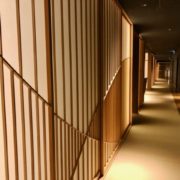 Hoshinoya Tokyo
Hoshinoya Tokyo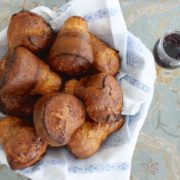 Popovers
Popovers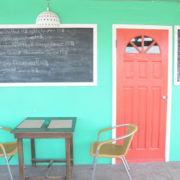 BJ’s Big Spring restaurant, Anguilla
BJ’s Big Spring restaurant, Anguilla
Thank you for the review. It makes me want to go there earlier. I'm going in in mid January.
You will have a wonderful time! Enjoy!!